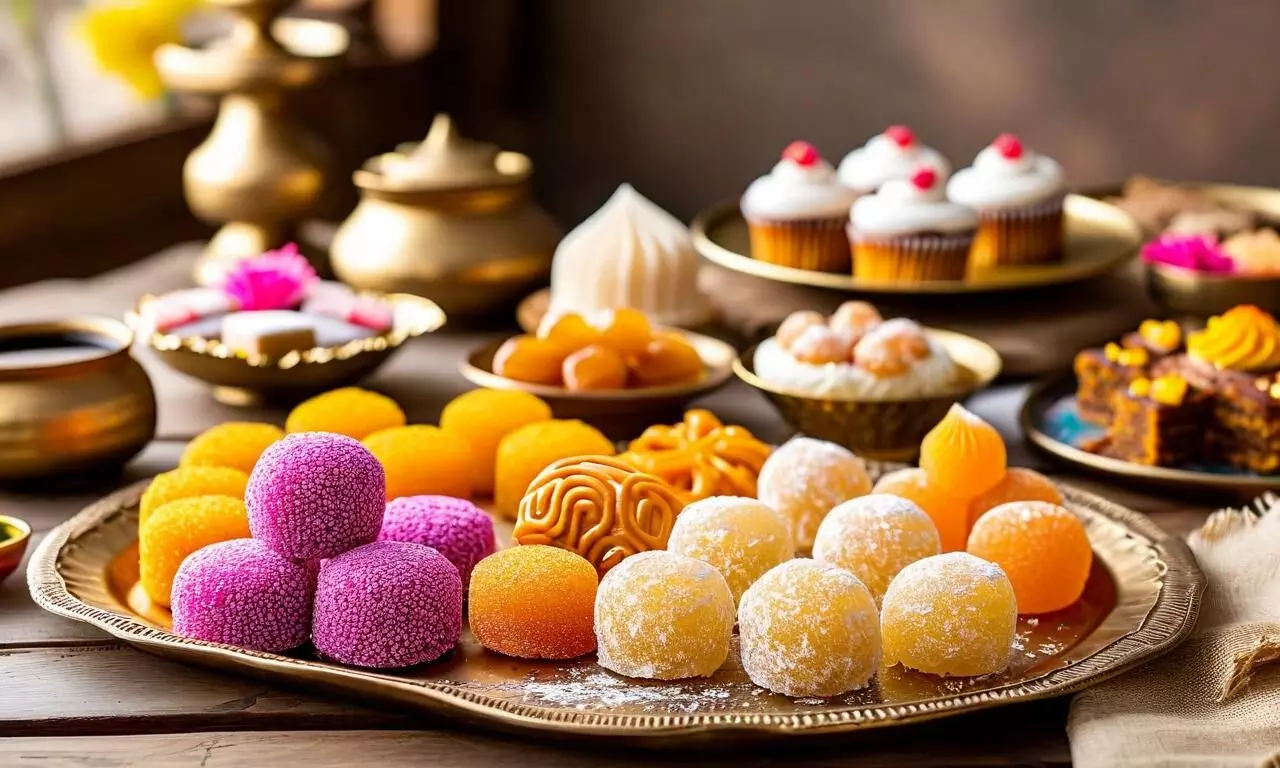From laddus to chocolates: 7 in 10 urban homes regularly eat sugary foods; 43% indicate addiction
However, everyone is also becoming aware of the dangers of consuming too much sugar and sugar-related products
By - Newsmeter Network |
Hyderabad: It is the time of the year again when most Indians are tempted to indulge their sweet tooth, being festival time, whether they like it or not.
Traditionally, no Indian meal was thought to be complete without partaking in some kind of sweet preparation. Times have changed as the array of sweets and desserts expands, keeping abreast of new trends and preferences. However, everyone is also becoming aware of the dangers of consuming too much sugar and sugar-related products.
Changing sweet tastes
Slowly, many affluent consumers are moderating their refined sugar intake in favour of healthier alternatives, while the mid-income and rural sectors are increasing their consumption of branded sweets.
Many things may have changed, but the love of anything sweet lingers, be it Indian sweets or ice creams or chocolates. For the health-conscious Indians, who are growing in number, many sugar-free options are now available in the market, right from products made with sugar substitutes, natural ingredients like honey, jaggery or dry fruits like figs. This helps many consumers feel less guilty about their indulgence. Then, too, there are Indian sweets made with a twist, like baked gujiyas, multigrain malpuas, oats biscuits, strawberry kheer, dry fruit sweets, etc.
With Diwali being the period when sugar consumption soars in India, LocalCircles concluded its 2025 sweets consumption survey, which attempted to understand if there had been any change in the sugar consumption pattern of Indian households.
The survey also tried to find out if there is any shift from demand for traditional sweets to other products containing sugar.
74% urban homes consume traditional Indian sweets 3 or more times a month
The survey first asked consumers, “How many times each month generally do you/members of your household consume traditional Indian sweets?”
Out of 21,965 who responded to the question 5% indicated “every day”; 26% of respondents indicated “15-30 times a month”; 21% of respondents indicated “8-15 times a month”; 22% of respondents indicated “3-7 times a month”; 18% of respondents indicated “1-2 times a month”; 5% of respondents stated the question is “not applicable (don’t consume them)”; and 3% of respondents did not give a clear answer.
To sum up, 74% urban Indian households consume traditional Indian sweets 3 or more times a month.
A comparison of the survey results in 2024 shows that the percentage of urban Indian households that consume traditional sweets three or more times each month has jumped by over 40 per cent in the last 18 months.
79% urban Indian homes consume packaged products 3 or more times a month
Given the wide range of sweets, confectionery, bakery and other packaged products widening, the survey asked consumers, “How many times each month generally do you/members of your household consume sweet bakery and packaged products like cakes, biscuits, ice creams, shakes, chocolates, candies, etc.?”
Out of 20,704 consumers who responded to the question 11% indicated that they consume these products “every day”; 27% of respondents indicated “15-30 times a month”; 17% of respondents indicated “8-15 times a month”; 24% of respondents indicated “3-7 times a month”; 17% of respondents indicated “1-2 times a month”; 2% of respondents indicated “Not applicable (don’t consume them)”; and 2% of respondents did not give a clear answer. To sum up, 79% urban Indian households consume cakes, biscuits, ice cream, shakes, chocolates, candies, etc., 3 or more times a month; 11% of respondents indicated that they consume them every day.
When comparing the response to this question last year, the new survey shows that the percentage of urban Indian households that consume sweet bakery and packaged products three or more times each month has jumped by over 40 per cent in the last 18 months.
Change to sugar alternatives
As per LocalCircles, 70 per cent of urban Indian household consumers surveyed say they are highly likely to switch over to 30 per cent less sugar alternatives if quality traditional sweets or packaged foods (chocolates, biscuits, cakes, ice creams) were made available.
43% say the majority are addicted to sugar or sugary products
As not everyone likes sweet products or eats sweet products frequently, the survey asked, “What percentage of members in your household you believe are addicted to sugar or sugary products?” Out of 20,138 who responded to the question 13% indicated “all of us”; 9% of respondents indicated “75-99% of us”; 21% of respondents indicated “50-75% of us”; 5% of respondents indicated “25-50% of us”; 23% of respondents indicated “1-25% of us”; 26% of respondents indicated “none of us”; and 3% of respondents did not give a clear answer. To sum up, 43% urban Indian household consumers surveyed say the majority members of their household are addicted to sugar or sugary products.
The need for awareness of the dangers of excess consumption
Even as sugar consumption continues to rise in India, which is one of the largest sugar producers and largest consuming nations in the world, there is limited awareness that consuming food high in seed oils and sugar can cause diabetes, heart disease and obesity.
The least the industry can do is make more low-sugar products available to consumers so that excess sugar consumption is curtailed.
Survey demographics
The LocalCircles survey received over 84,000 responses from consumers in 303 districts of India; 61 per cent of respondents were men, while 39 per cent of respondents were women. As many as 46 per cent of respondents were from tier 1, 29 per cent from tier 2, and 25 per cent of respondents were from tier 3 and 4 districts.